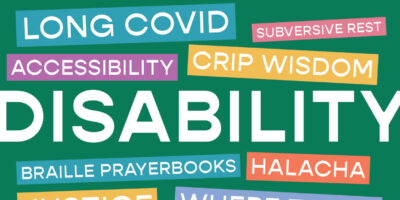
Salvation: Thrifting as Solace
In 2015, my husband, Paul, received a diagnosis of Alzheimer’s, and for six long years I cared for him pretty much on my own. When this no longer was tenable—or even safe—I was faced with the unenviable and daunting task of finding a nursing home. But the geriatric social worker I consulted put it this way: “You want the staff to look at him and think, Oh that one; the wife could show up anytime.” This was the most helpful piece of advice I received and it dramatically reduced the field. Since I don’t have a car (or even drive, for that matter) I needed to find a facility within walking distance of our house in Park Slope, Brooklyn. There were three. One had a waiting list that I was told “moved very slowly.” Another was so derelict, so shabby, that I couldn’t bear to think of his living in such a place—or my visiting him there. Which left only one. The facility was relatively modern and in decent shape. The lobby resembled the kind you’d find in a low-end hotel chain and the rooms, while charmless, were at least clean. And they had a bed for him. So in July of 2021, I brought him there to live while I began the next phase of my marriage—visiting him in a home that was his, but not mine.
Before he moved in, I had asked a custodian to help me hang photos and reproductions on the walls. In his prime, Paul been an artist and a photographer, a man of exquisite and refined sensibilities. Since he still responded to visual images, I was keen to feed what was left of his imagination. I also schlepped art books, a rug, a quilt, sheets and towels. I ordered an armchair, standing lamp and floral pillows for the bed. I did all these things in the same naive (and in this case slightly daft) way in which I might decorate a dorm room. What was I thinking?
None of it seemed to matter to him anyway. He took no notice of what was around him, and even started taking the pictures down and removing them from their frames in order to shred them. I’d find his cherished art books with cracked spines and torn pages. I also found things belonging to other residents—photographs, clothes, a Bible, a Jane Fonda VHS exercise tape—that he must have picked up as he wandered the halls. The room became cluttered and untidy and I hated being in it.
Since it was summer, I brought him outside to the enclosed patio. A change in scene did nothing to hide his precipitous decline—always trim and active, he now shuffled tentatively when we walked to the elevator. I arrived with sweets and a latte, his favorite. But he smeared whipped cream all over his face, and couldn’t use a fork to spear a piece of the apple pie I brought. I’d routinely find him in clothes that were not his own, and dirty besides. Somehow he lost four—yes that’s right four—pairs of shoes. Often the pull-ups he now wore were sodden, like a baby’s diaper that had not been changed all night. When I confronted staff members with this information, I was gaslit with such responses as, It’s not my shift, he’s not that wet, he stands at the sink and soaks the pulls-ups by himself. Still worse was his failure to remember who I was; he’d confuse me with a girlfriend from years before we’d met, his favorite sister, or in one instance, our daughter.
Paul and I had met in 1981, married in 1985 (information he now greeted with frank surprise), and he’d been my one and only, the constant and true love of my life. Now he was gone, not physically, but in every other way. It was jarring— even crazy-making—that he looked and sounded the same, and yet was so radically changed, his mind reordered and ravaged by the disease. I’d walk out of the facility heartsick and desperate to escape. I needed a way to decompress, to transition from the sorrow of watching him crumble like a sugar cookie right before my eyes, to what was going to be the rest of my life without him.
Some people might have treated themselves to a brownie, a cupcake, or a stiff drink. But for me, solace lay not in a cafe or a bar. No, it was practically around the corner in the aptly named Salvation Army Thrift Family store. I should stop here to say this was not a new pastime for me. I had been going to these store for years, first with my mother, herself a consummate mistress of thrift, and then later on my own. The thrill of the hunt, the surprise of the find—well, these never grew old. I sought out Salvation Army stores in four of the five boroughs of New York City (Staten Island is still on my bucket list), as well as in states all over the country. The familiar red and white shield-shaped logo, when spied from car window or approaching on foot, always set me aquiver.
But these post-nursing home visits took on a greater intensity, or even urgency. I would speed-walk the short distance from the facility to the store, adrenaline already pumping. I could see the awning first, jutting out from the side of the building. And then I was there, about to walk into a space that would allow me the luxury of putting all my sadness on hold, at least for a little while.
Once inside, I began my methodical survey. The ground floor offered shelves of dishes and bric-a-brac, and glass-fronted cases housing jewelry and an assortment of accessories. I would make the rounds slowly, examining, inspecting and assessing. Into my shopping cart went items I was considering. Then I took the elevator to my own personal mecca: the racks of women’s clothing, sorted by type of garment and color (but never size) that filled the vast fluorescent-lit space. This was where I truly came back to life, thoughts of Paul pushed to periphery by the task at hand. And what was that task? Looking through the array of jettisoned garments, each one a possibility, each one representing its own kind of hope.
Seasoned thrift shopper that I am, I was quite able to see beyond the usual retail frippery meant to enchant and seduce, and was adept at probing the racks with discernment, looking for what may not be visible to the casual observer. I’ve read that wild pigs are used to hunt truffles hidden on the forest floors of Europe; the uninitiated eye sees mud, sticks and leaves but the pig knows its business and, after snuffling around in the dirt, eventually finds the precious morsels. I can relate: when let loose in the Salvation Army, I find value where another might see only dross.
On one of these occasions, the treasure I sought seemed elusive, an initial perusal yielding nothing more than the cheerless and predictable normcore spewed out by big-box, low-end chains: Old Navy, Target, Forever 21, H&M. Even new-with-the-price-tag-still-on, such stuff did not tempt. But I had been doing this for too long and too devotedly to give up easily, so I kept hunting, a latter-day Moses parting the Red Sea of racks. Soon, the quarry began to emerge, so many bunnies, peeping shyly from the forest.
I paused to consider a black sweater whose graphic white heart motifs made it a dead ringer for a $600 sweater seen in a previous summer at Lisa Perry in Sag Harbor. I was also drawn to a hot pink and white checked button-down woven from a surprisingly fine cotton and an intriguing knit top in subtle shades of sea foam green and aqua. Soon my shopping cart was spilling over.
The two dressing rooms were in use, so I improvised. I’d arrived wearing a thin, sleeveless scoop neck top, enabling me to try on jackets, sweaters and blouses with little added bulk. My lightweight, airy skirt allowed me to slip on slacks or other skirts. I could even put a dress on over this ensemble, and then shimmy out of the skirt, putting it back on when the fitting was over. I got to work.
Upon closer inspection, the black and white sweater turned out to have more moth holes than I wanted to deal with, the checked shirt was too small and the pastel knit scratchy beyond endurance. No matter. I returned the rejected garments to the racks and found my way over to the racks of shoes.
Perseverance paid off. A pair of loafers from J. Crew in shiny gray patent leather managed to invoke both the sophistication of a Parisian soulier, and the insouciant charm of a slightly naughty schoolgirl. Like Cinderella with her glass slipper, I was enchanted when they fit. And since their ticket was one of the two colors discounted that day, they were only $11, not the $22 they would have ordinarily cost. While waiting in line to pay, I noticed two straw hats stuffed haphazardly behind the register. One sported a jaunty dotted sash around its crown, the other was an oh-so-Audrey-Hepburn-in-Givenchy, with a crisp, 1960’s inspired shape and pert bow at the back. They cost six dollars apiece and I bought them both. My entire outlay totaled a whopping $23, which in any other store was what you might pay for a pair of socks. As I left the store, I felt both cleansed and satisfied. I came, I hunted, I conquered.
But as I walked—away from the store, away from Paul at the center—I realized that hunting, with its narrative of predator and prey, of bloody and fatal endings did not describe what I’d just done. Rather, my journey past the densely packed shelves of chipped platters, dinged colanders and besmeared punchbowls, the aisles of orphaned garments, was one of reflection, contemplation and even redemption. All these discarded objects— where had they begun their lives and how did they find themselves here? The strapless sequined mini, the droopy prom dress, the plaid blazer with the paisley lining—they all had stories to tell, and as I made my way through them, I’d been listening to hear their subtle murmurings.
And there was yet something else I was doing, something bordering on the holy. By sifting through and selecting the forsaken garments, I was infusing them with new life, one patient, hope-filled breath at a time. I could mend their ripped seams and patch their holes. I could scrub out their stains, their spots, launder then sprinkle them with lavender water and press. I couldn’t perform these everyday miracles on my husband. He was lost to me, and would only go downhill from here.
I arrived home, greeted by the hysterical elation of the dog. When the frenzy of licking had subsided, I put the shoes in the closet and hats in a basket near the door. These things in no way compensated for the enormous losses I was facing, craters in the landscape of my future. But through my searching—and finding—some fragile sense of equilibrium had been restored. Salvation comes to each of us in different ways, and I had found mine in the down-and-dirty retail endgame. All I could do was to perform these displaced rituals of resurrection and so I did. Amen.
Yona Zeldis Mcdonough is Lilith’s fiction editor and the author (as Kitty Zeldis) of The Dressmakers of Prospect Heights.




